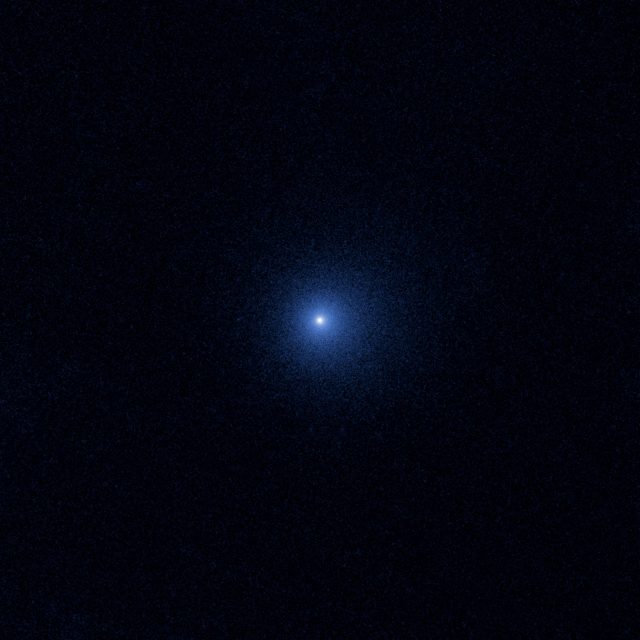An in-bound comet 1.5 billion miles from the sun has been pictured making the long journey from the edge of the solar system.
The miles-wide lump of frozen water, gas and dust photographed by the Hubble Space Telescope is the most distant active in-coming comet ever seen.
Known as C/2017 K2 (PANSTARRS) or “K2”, the comet has already been travelling for millions of years from its birthplace in the Oort Cloud, a shell of icy objects almost a light year across on the solar system’s outermost fringes.

For the next five years it will continue into the inner solar system before reaching its closest approach to the sun just beyond the orbit of Mars. There is no chance of the comet colliding with Earth.
Because it is already being slightly warmed by the sun the comet has started to develop a coma, an 80,000 mile-wide fuzzy halo of dust enveloping its solid nucleus.
Lead researcher Dr David Jewitt, from the University of California at Los Angeles, said: “K2 is so far from the sun and so cold, we know for sure that the activity – all the fuzzy stuff making it look like a comet – is not produced, as in other comets, by the evaporation of water ice.
Still want to know more about comet K2? Check this out: pic.twitter.com/LDKE19YJ3a
— Hubble (@NASAHubble) September 28, 2017
“Instead, we think the activity is due to the sublimation (a solid changing directly into a gas) of super-volatiles as K2 makes its maiden entry into the solar system’s planetary zone.
“That’s why it’s special. This comet is so far away and so incredibly cold that water ice there is frozen like a rock.”
The Hubble observations suggest that sunlight is heating frozen gases such as oxygen, nitrogen, carbon dioxide, and carbon monoxide that coat the comet’s frigid surface.
Hubble has observed the farthest active inbound comet ever seen before! Find out more about comet K2:https://t.co/DHn6V1RjEf pic.twitter.com/fHhKUoILqG
— Hubble (@NASAHubble) September 28, 2017
As the icy volatiles lift off the comet they release dust, forming the coma.
Past studies of the composition of comets near the Sun have revealed the same mixture of volatile ices.
“I think these volatiles are spread all through K2, and in the beginning billions of years ago, they were probably all through every comet presently in the Oort Cloud,” said Dr Jewitt. “But the volatiles on the surface are the ones that absorb the heat from the sun, so, in a sense, the comet is shedding its outer skin.
“Most comets are discovered much closer to the sun, near Jupiter’s orbit, so by the time we see them, these surface volatiles have already been baked off. That’s why I think K2 is the most primitive comet we’ve seen.”
From the Hubble images, the scientists estimate that the comet’s nucleus is less than 12 miles across.
K2 was discovered in May 2017 by the Panoramic Survey Telescope and Rapid Response System (PANSTARRS) in Hawaii, part of the American space agency Nasa’s Near-Earth Object Observations Programme.






